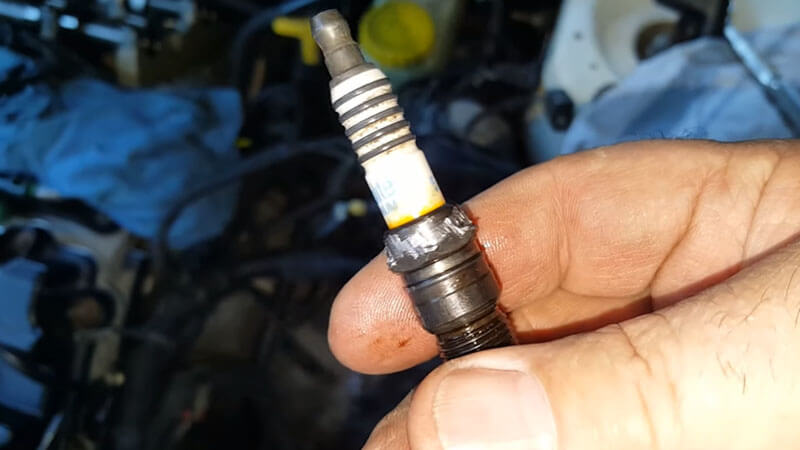Stripped spark plugs are a frequent car maintenance issue. There are two primary causes for stripped car plugs.
The first is working on the spark plug while the engine is at a high temperature.
The second reason is a corroded plug that has broken. If you want to keep your spark plug from getting stripped, using dielectric grease is an excellent choice.
But what if the spark plug ends up being stripped? It is quite possible. Therefore, a basic understanding of removing a stripped spark plug is necessary. You can efficiently complete this procedure utilizing a specialized nut extractor socket that is made to hold the damaged spark plug nut.
Therefore, read the following article for complete and detailed information on How to remove a stripped spark plug?
How to Remove a Stripped Spark Plug?
Using the appropriate equipment and taking the proper steps will help you get the best results and save you a lot of time. It would be beneficial to assemble all the necessary tools before continuing because forgetting a few things will interfere with removing your spark plugs.
The Essentials
- Spark plug Extractor
- Spark plug boot remover
- Blowgun and shop air
- Spark plug thread chaser
- Set of plugs
- Dielectric grease
- Underhood work light
- Spark plug socket and ratchet
- Penetrating oil
- Gloves
Now, let’s explore the procedure below:
1. Preparation
You should check first whether there are any extra steps you need to take to get to the spark plugs. Always refer to your car’s service manual for the most up-to-date information on your vehicle’s make, model, year, and engine.
2. Pull the Ignition Coil
You need to locate the spark plugs. Most cars have these towards the top of the motor. There are vehicles where the ignition coil needs to be removed before you can easily access all of the spark plugs.
Some cars have big wires that go straight to the spark plugs. Simply spin the wire’s boot (the connection that ties the engine to the plug is called the boot) and take it off.
3. Clean Dirt
You can continue working more comfortably with a clean plughole. You can use your blowgun to sweep out the plughole of any dirt. In addition, this will keep any dirt or dust from entering the cylinder while you remove the spark plug.
However, if you don’t have a blowgun, you may use a paintbrush to wipe the plughole in a pinch. Although this strategy may not have the same results as a blowgun, it is preferable to doing nothing.
4. Remove Sparks
Use the ratchet to remove the spark plugs from each lighter. Take note of the following details while you do so:
- If you remove many spark plugs at once, replacing them will be a hassle. So, it would be best if you always relocated the second spark after dealing with the first.
- Each spark is attached to a unique location, so if you take them all out at once, you can have difficulties figuring out where they all belong.
- If you want to unplug everything at once, make a list or name each cable first. Doing so is essential since it is easy to become confused about which wire goes where in a car with a multi-cylinder engine.
5. Examine the Plug
Looking at the plug, you can discover a lot about the motor’s health. A gray or brown plug indicates a well-functioning motor. Problems with the engine can be detected when the plug is filthy or changes color.
6. Check the Gap
Before installing new spark plugs, use a feeler gauge to check the proper distance between the electrode and the plug’s tip. Most spark plugs are already adjusted for a specific application and model.
For more information about the spark plug you are using, it is best to check out the manual.
7. Use an Anti-Seborrheic Compound
New spark plugs require an anti-seize compound or dielectric lubricant to be applied to the threads before they can be screwed in. Using an anti-seize compound or dielectric lubricant can shield your car’s electrical system from outside interference and noise. With the oil on the spark plug, subsequent removal will be a breeze, and any potential misfires will be out of action.
Note: Be extremely cautious and avoid touching the lower threads at any point in this process.
8. Insert Spark Plugs in the Spark Plug Hole
You can now insert one of the new spark plugs into the plughole until you are unable to spin it with your fingers any longer. When you reach that stage, all you need to do is tighten it using a torque wrench according to the specification levels indicated in your service manual.
A piece of rubber hose over the spark plug’s end can be a threading tool, making it easier to secure the plug’s position in the engine.
Note: Be careful not to overtighten the spark plug.
9. Finishing
You are nearly there. All that is needed is to reattach the appropriate wires to the spark plugs and the ignition coil, ensuring that it is well placed on the spark plug once you have secured the spark plugs properly.
Also, check your engine to ensure it is operating correctly after removing and replacing the stripped spark plug.
New Spark Plug Aftercare
If you successfully fit the new spark plug, you will need to think about how to take care of it. Additionally, it’s essential since you don’t want to fix your plugs too often.
Here are some aftercare guidelines to keep your spark plugs in great form:
- Ensure you fully grasp the manufacturer’s instructions for the replacement spark plugs. It will notify you of your boundaries.
- If you’re aware of the restrictions, you should check the outlets regularly to ensure they’re working correctly.
- It is essential to keep in mind not to lean on your vehicle while the engine is running.
- If you see a problem, you must take prompt action to prevent it from worsening.
FAQs
When you reach a distance of 30,000 miles, whether you have standard spark plugs or long-life spark plugs determines the life expectancy of your engine.
The maximum range for a typical vehicle is between 30,000 and 50,000 miles. The latter requires replacement between 60,000 and 150,000 miles.
Your vehicle is unable to move or function in any way. Spark plugs play a crucial role in the engine cycle, transforming fuel into mechanical work. Therefore, the engine cycle cannot take place in the absence of spark plugs.
In addition, research shows that the condition of your spark plugs indicates your engine’s overall health.
Avoid starting the engine if you know the spark plug has been damaged; wait until you have fixed it. If you keep driving recklessly, the engine could blow up, putting you and others on the road in harm’s way.
Final Verdict
Spark plug maintenance has a significant impact on engine life and efficiency. They may be tiny, but the utility they add is substantial.
However, the spark plugs deteriorate or become stripped over time. For this, you must take them out and put new ones in their place when this occurs.
All the details on How to remove a stripped spark plug are detailed above for your convenience. I hope the above information helps you remove the spark plug on your own without costly repairs.


